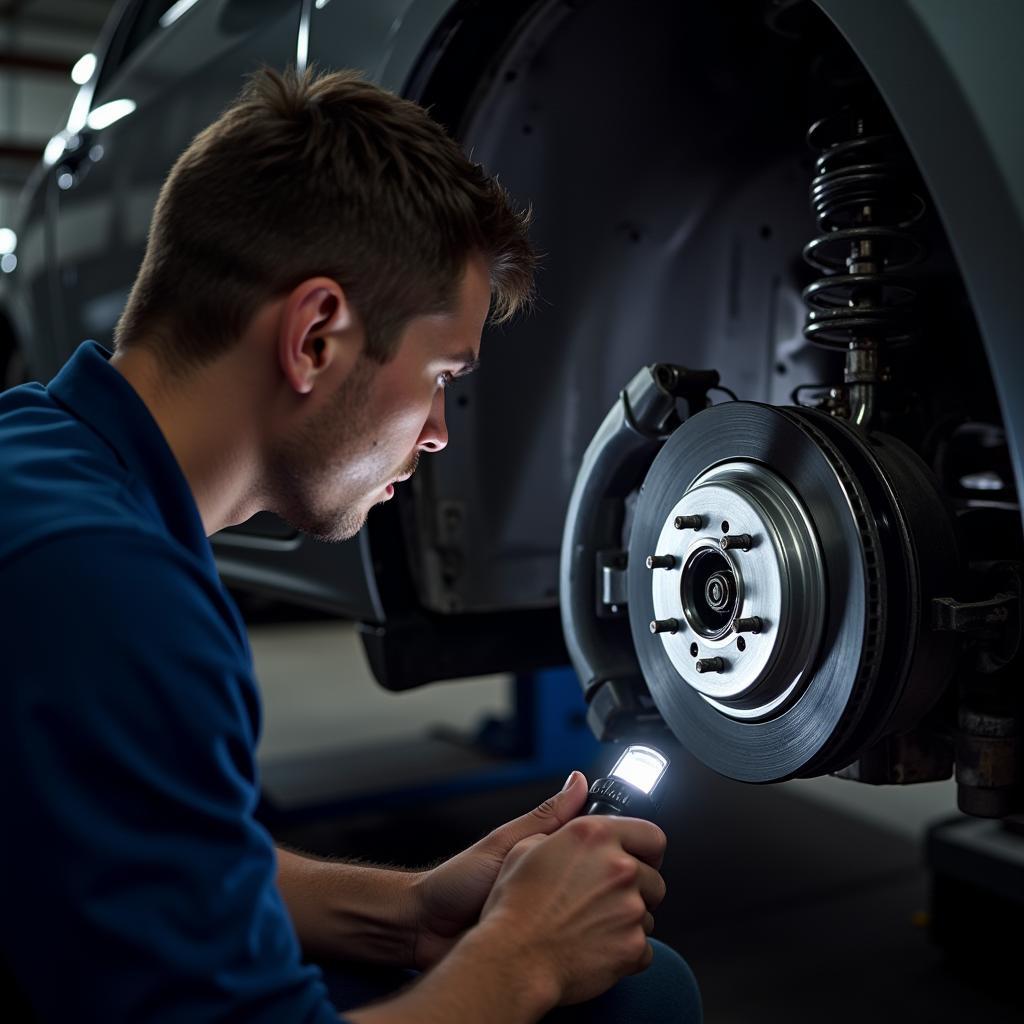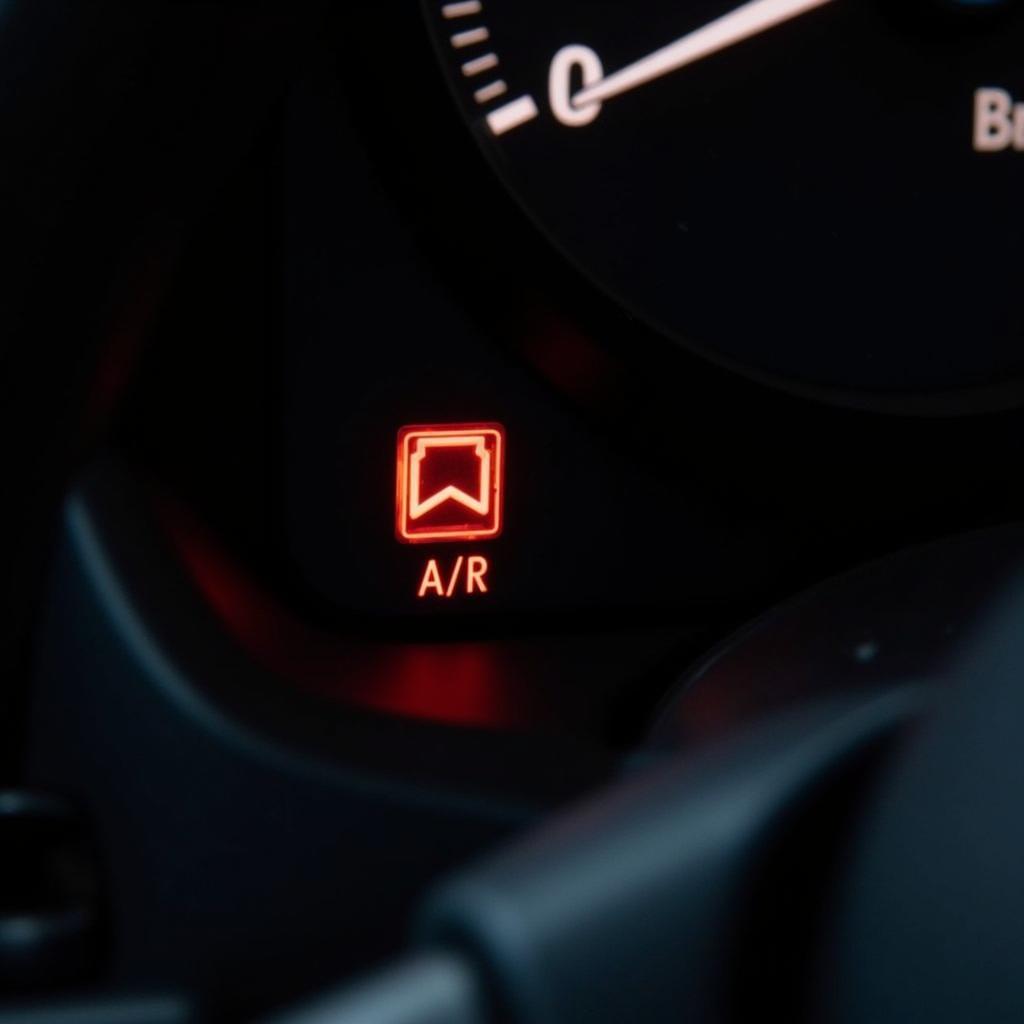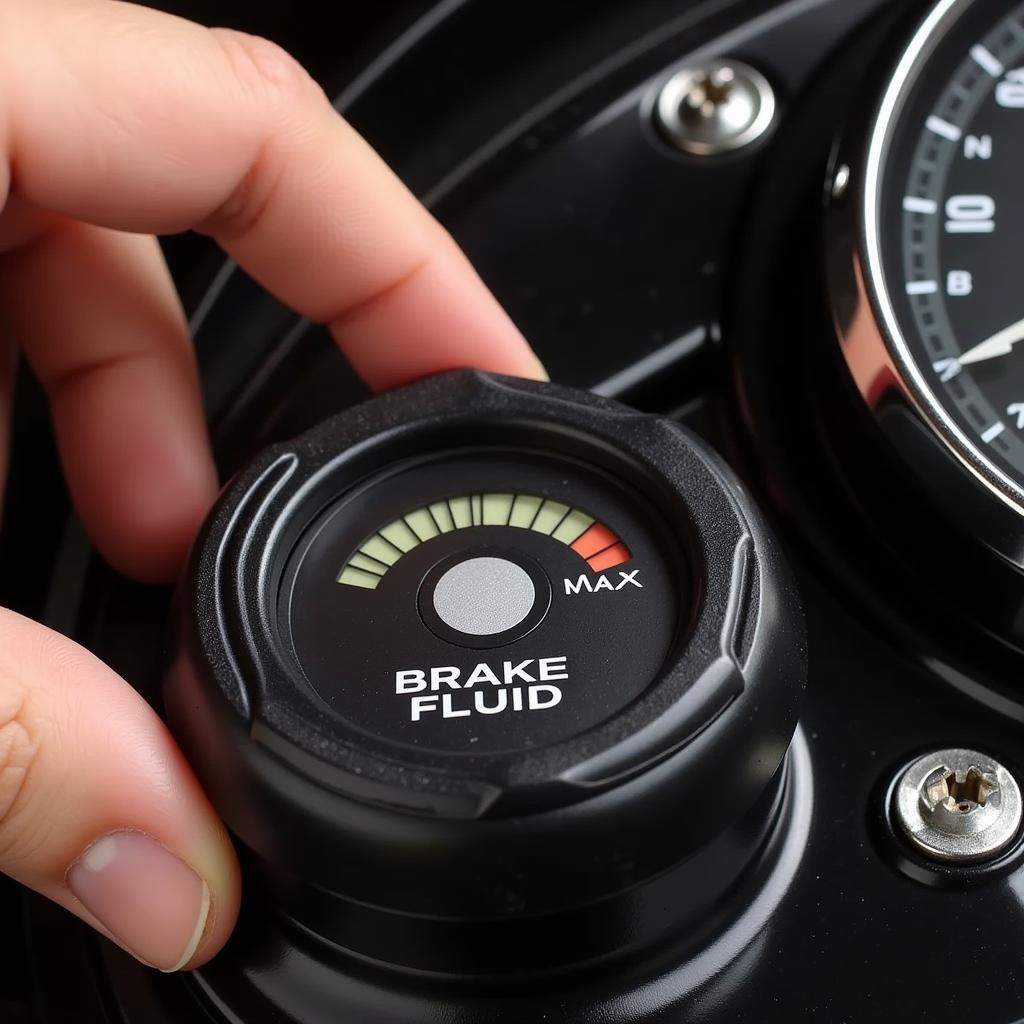The brake lining warning light on your 2006 BMW 750Li is a crucial safety feature, alerting you to potential issues with your braking system. Ignoring this warning could lead to reduced braking performance and dangerous driving situations. This comprehensive guide delves into the common causes of this warning light, empowers you to diagnose the problem, and outlines potential solutions.
Understanding Your BMW’s Brake System
Before diving into the specifics, it’s beneficial to understand the basics of your BMW’s braking system. The brake lining warning light is directly linked to your brake pads, which are essential components that create friction against the brake rotors to slow down or stop your vehicle. Over time, brake pads wear down, and when they reach a certain thinness, the warning light is triggered.
Common Causes of the Brake Lining Warning Light
While worn brake pads are the most common culprit, several other factors can trigger the brake lining warning light in your 2006 BMW 750Li:
- Worn Brake Pad Sensor: Your BMW is equipped with brake pad wear sensors, small metal tabs embedded within the brake pad material. When the brake pad wears down to a specific level, the sensor makes contact with the rotor, completing a circuit and illuminating the warning light.
- Faulty Brake Pad Sensor: Like any electrical component, brake pad sensors can malfunction. A broken wire or a sensor dislodged from its position can trigger a false warning light, even if your brake pads are in good condition.
- Low Brake Fluid Level: Brake fluid is the lifeblood of your braking system, transmitting the force from your foot on the brake pedal to the brake calipers at each wheel. If the brake fluid level drops significantly, often due to a leak, the warning light may illuminate.
- Issues with the ABS System: While less common, problems with your Anti-lock Braking System (ABS), such as a faulty wheel speed sensor, can sometimes trigger the brake lining warning light.
Diagnosing the Problem
When the brake lining warning light appears, a systematic approach to diagnosis is crucial:
- Check Your Brake Pads: Begin by visually inspecting your brake pads. If you can see the friction material worn down close to the metal backing plate, it’s time for a replacement.
- Inspect the Brake Pad Sensors: Carefully examine the brake pad wear sensors for any signs of damage, such as broken wires or loose connections.
- Check Brake Fluid Level: Locate the brake fluid reservoir under the hood and check the fluid level. If it’s below the minimum mark, add the recommended brake fluid type. However, consistently low brake fluid indicates a potential leak, requiring professional attention.
- Scan for Fault Codes: Using a professional-grade diagnostic scanner, you can read the fault codes stored in your BMW’s computer. These codes can provide valuable insights into the specific trigger of the warning light, helping pinpoint the problem area.
Solutions: From DIY to Professional Assistance
Depending on the diagnosed issue, the solutions to address the brake lining warning light range from simple DIY tasks to seeking professional help:
- Brake Pad Replacement: If your brake pads are worn, replacement is necessary. This can be done at home with basic mechanical skills and tools. However, it’s advisable to consult your owner’s manual or a reliable repair guide for your specific BMW model.
- Brake Pad Sensor Replacement: Replacing a damaged or faulty brake pad sensor is a relatively straightforward procedure. These sensors are often integrated with the brake pads themselves, so replacing the pads usually involves replacing the sensor as well.
- Addressing Brake Fluid Leaks: Locating and repairing brake fluid leaks requires specialized knowledge and tools. If you suspect a leak, it’s crucial to seek professional assistance from a qualified mechanic to ensure proper repair and prevent potential brake failure.
- ABS System Diagnosis and Repair: Troubleshooting and repairing issues within the ABS system demand advanced technical expertise. If your diagnosis points toward an ABS-related problem, it’s best to consult a qualified BMW specialist equipped with the necessary diagnostic tools and knowledge.
 Mechanic Inspecting Brake System
Mechanic Inspecting Brake System
Don’t Ignore the Warning
The brake lining warning light in your 2006 BMW 750Li is a critical safety feature, not to be ignored. By understanding its causes and taking the appropriate steps to address the underlying problem, you ensure the optimal performance of your braking system and, most importantly, your safety and the safety of others on the road.
Remember, “A stitch in time saves nine.” Addressing brake issues promptly can prevent costly repairs down the road and keep your BMW performing at its best.


